Spotlight: Maya Valladares helps artists copy famous works at The Metropolitan Museum of Art
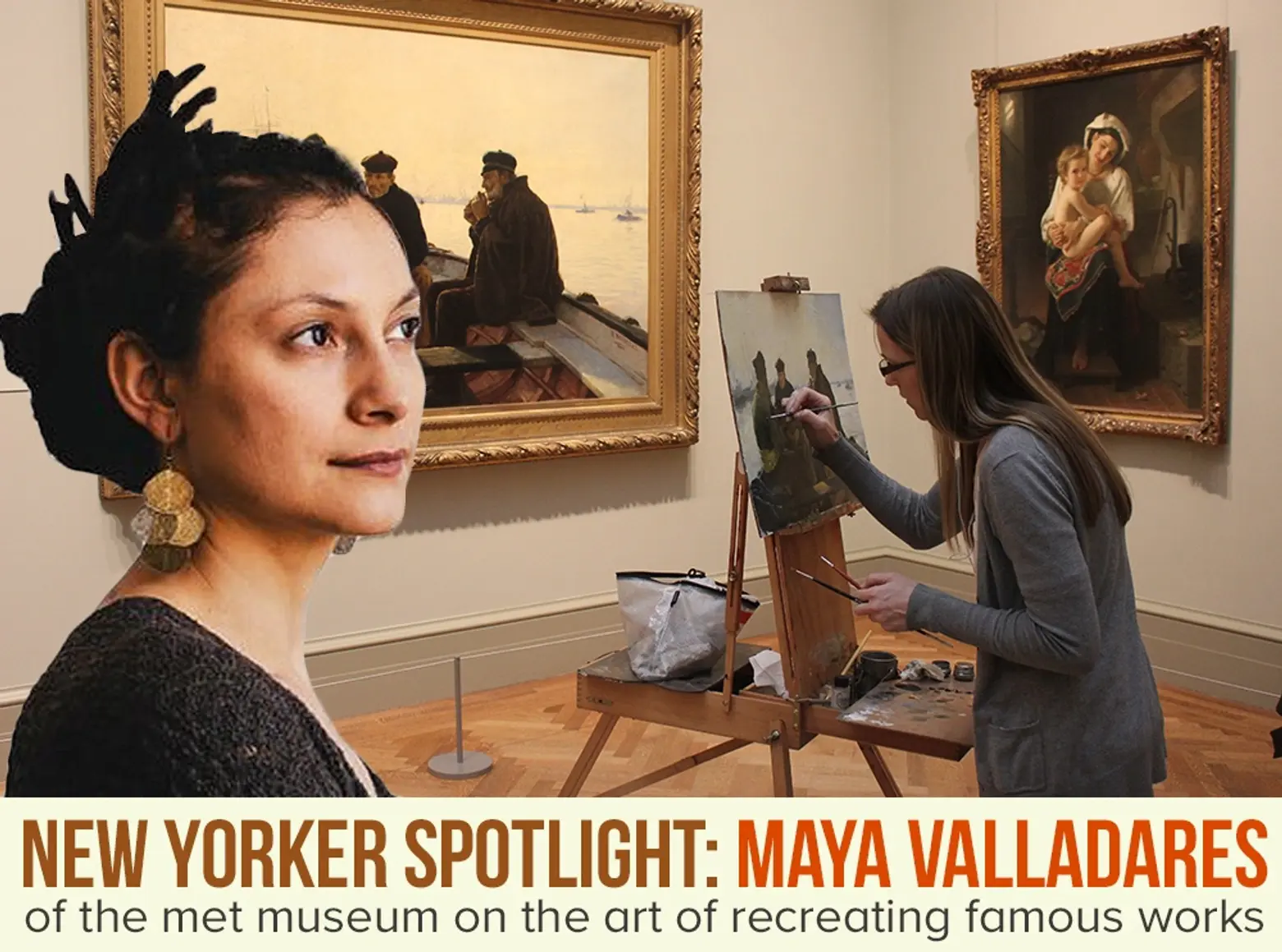
If you’ve ever visited The Metropolitan Museum of Art and watched an artist working at a canvas or sculpting amongst the museum’s larger than life pieces, then you’ve seen the Copyist Program in action. Founded in 1872, two years after The Met first opened, the program has provided countless artists the opportunity to copy the great works that fill the museum’s numerous galleries.
The Copyist Program is overseen by The Met’s Department of Education, and Maya Valladares, an artist focusing on textiles, serves as the its Assistant Educator for Public Programs and Creative Practice. Her role requires her to create holistic experiences through the museum’s public programming, and through the Copyist Program, she works to enhance the experience of copying for the students and cohorts that come through the museum’s doors.
6sqft recently spoke with Maya, who shared details about the program’s rich history, what copying offers artists, and what it’s like to duplicate the works of a world-class museum.
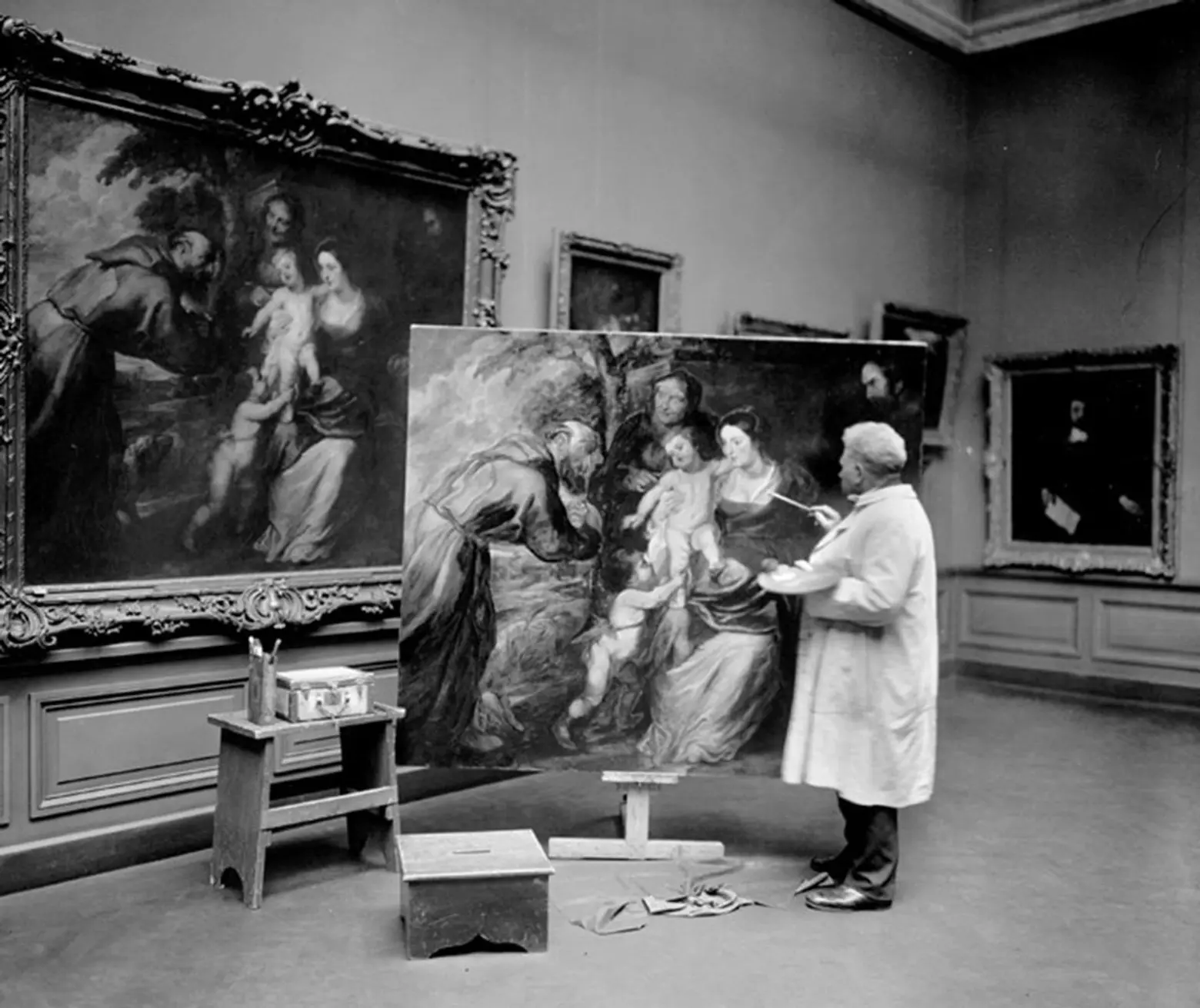 A copyist at work in the European Paintings galleries, ca. 1902–29.
A copyist at work in the European Paintings galleries, ca. 1902–29.
The Copyist Program began in 1872. Why was the program founded?
Maya: A lot of folks don’t know that when The Met was founded there were artists on the board. And artists have always been a voice in this museum; it’s just kind of part of its DNA. We’ve gone through a few iterations of mission language in our almost 150 years, but the original mission had a line encouraging and developing the study of the arts.
It’s this idea of “we have all of this stuff,” and the Copyist Program was created as a way for the collection to be of service to the public. They asked: How is it most useful to the public? Who might want to use it? How might they want to use it? And copying is a way that people can use the collection as a form of instruction and as a form of research. That was the motivation in 1872, and it is the same today.
Has the program changed at all in the last 144 years?
Maya: Schools have always come, but we’ve also always had individuals who come and work who aren’t affiliated with schools. That used to be ad hoc. There was a wonderful woman named Hazel who people would send a post mail letter to apply and she would send them a written letter back. As technology caught up, she would call them. It was this very slow, very individualized process, and what we realized is that we had people working in isolation. We shifted the program so that now we have a cohort of individuals who come and do a group study.
We welcome a group of folks who are working in all different mediums, at all different levels of their careers, and they all have a different level of understanding of copying. But they have an orientation together, they go off into the galleries and work, they have a mid-semester check-in where they give each other feedback and advice, they work some more, and this all culminates into a public event where their work is shown and they get to talk about the process of copying in the museum. It forms a community in a way that wasn’t possible with individual copyists.
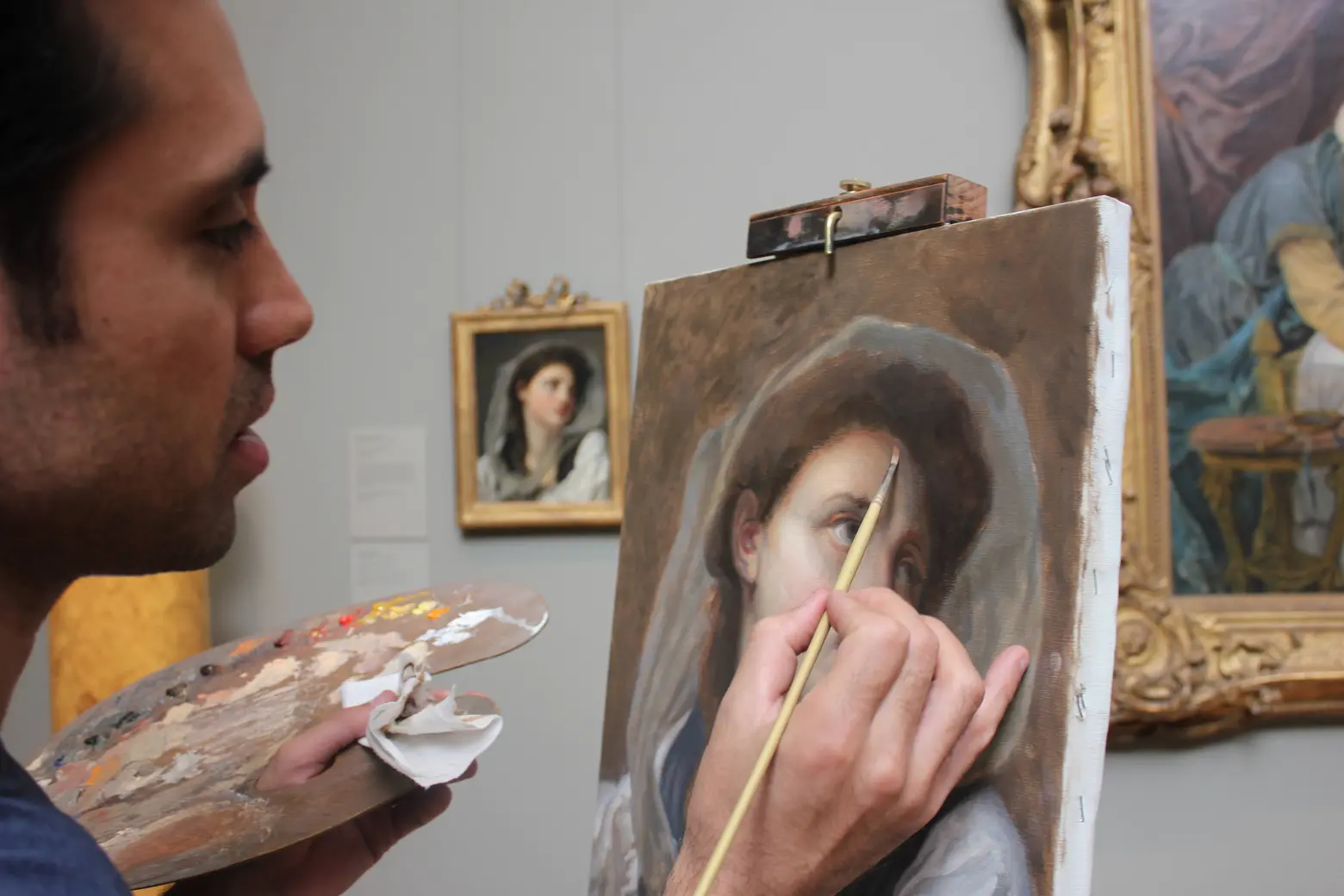 © Alayna Wiley
© Alayna Wiley
What does copying a great work of art in a museum offer an artist?
Maya: What it offers one artist may not be what it offers another, but the goal of the program is to facilitate dialogue with people you can’t actually have a class with. So if I want to go learn from Degas, I can’t go take Degas’ class. It’s this idea of pulling back the curtain on the artist’s process. It’s really trying to understand what the artist was doing; what the artist was thinking and why.
Copying allows an artist to reverse engineer the process of an artist that they love and respect and want to learn more about. It’s this way of peeling back the layers, but pushing through this idea of how this great artist was born a genius, launched into the world and started making amazing work. Any artist knows that’s not actually true. There’s serious labor that goes into this, and by making a copy, you have to work through those layers. Leonid Gervits teaches one of the school programs, and he says, “You’ve got red in the shadows.” You don’t see red in the shadows until you start to figure out why your shadow color isn’t right.
How does the museum select individual artists?
Maya: We usually get about three applications for every spot that is available, sometimes more, sometimes less. The way that we look at people is we don’t have a checklist. Since we do view them as a cohort and view them as co-learners and co-teachers, we look at every application, highlight the language in the essay, look at the images of their work, think about why they want to work at the museum, and then we actually print it all out and cover my office with the applications and look at it as a group.
Right now we have an academic sculptor in the cohort coming in who is just starting to foray into digital sculpting and 3D printing, and then we have someone who is working in virtual reality (VR) sculpting who is creating objects in VR that might have movement to them because we can’t do that in the galleries. He also has a background as an academic sculptor and jeweler. So we saw those two people and said, “Okay, you both have similar backgrounds, but one of you is working in VR and one of you is working in oil based clay in this academic way, so how cool would it be for you guys to have dialogue.”
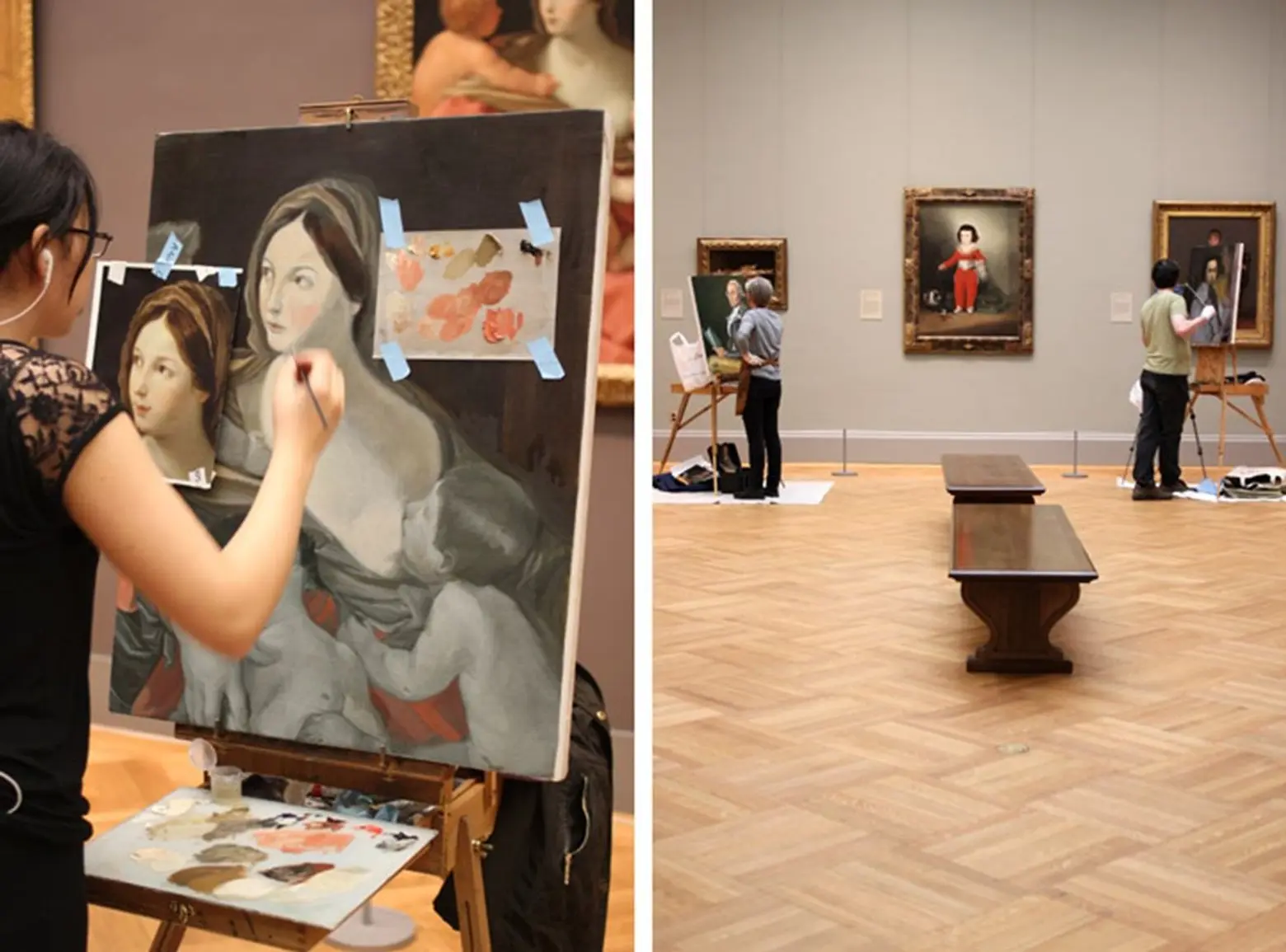 Copyists from the New York Academy of Art at work in The Met’s galleries. Photos courtesy © Laurie Murphy
Copyists from the New York Academy of Art at work in The Met’s galleries. Photos courtesy © Laurie Murphy
When artists apply, do they have to indicate the piece they are interested in copying?
Maya: We actually ask them for three choices. There’s a logistical element to it. The rules of the Copyist Program is that we want to give the copyists access to the works, but we also want to give everybody else access to the paintings, sculptures, and textiles. So we can’t for example have three copyists in a room at one time. We have to think about if a painting or sculpture or work is too close to a doorway, if it is close to a route of passage, if it is in the corner and would be obstructed from view during copying—there’s always a balance between access to the public and access to the copyist.
Are you ever surprised by what someone puts forward to potentially copy?
Maya: When I first started working here, I thought copying was very academic. I thought everyone is going to be in European Painting. Everybody’s going to do the very realistic looking work, and that’s actually not the case. We had somebody last semester who was doing an Impressionist work. If you want a really hard thing to copy, copy an Impressionist painting.
Some folks in the cohort are asking now to copy sculptures that have chunks missing, which is always fascinating to me because it’s as much about unpacking the history and social life of that object because you sculpt the break. But it’s just an interesting dialogue between what the artist’s intention was in the piece and what’s then happened to the piece, and how do you decide what to copy.
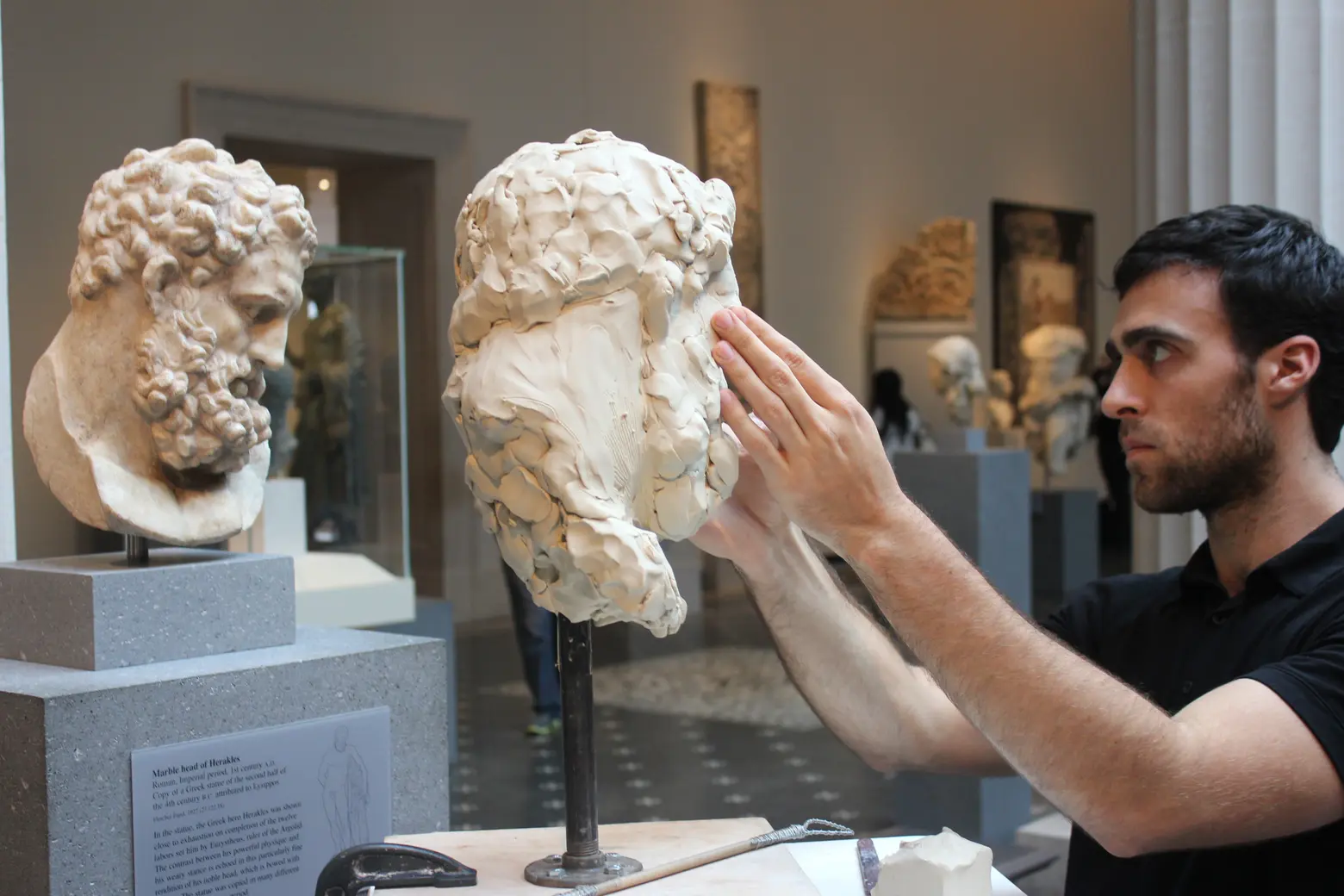 © Alayna Wiley
© Alayna Wiley
Do the copyists have rules and requirements they must follow?
Maya: All the sculptors, the painters, and the textile artists have size requirements. Sculptures have to be smaller than one cubic foot. So people are doing really pared down versions of works. And then you also have to have a 10 percent difference between the piece you’re making and the piece you’re copying. That’s just so copies are notable as copies and they also get all these stamps on them saying, “This is a copy.”
What does watching copyists at work offer museum visitors?
Maya: It becomes this bridge between the human being who created the work in the gallery, the human being who is copying that work, and the human being who’s walked into that gallery. A member of the public who may not be versed in these kinds of processes can come and watch a copyist who is doing a painting or a sculpture or a textile, one who may only be halfway through, and have this lovely moment where they go, “Oh, that’s what underpainting means.”
On average, how long does it take for the copyists to complete their work?
Maya: It’s totally individual. For the schools, they come anywhere from eight to 14 sessions. For the individuals, they come for eight sessions. And then some people will just shoot through their work and do three and four iterations of a copy. We had a young man a little while ago who did his entire copy in those eight weeks, went home, and in the period of time between when he finished copying at the museum and the culminating event, he carved and painted his own period appropriate frame and then brought it in. He felt that was integral to showing the work how it would have be seen.
Have you ever copied a work in The Met?
Maya: I have never copied a work in The Met. I want to weave a textile that is falling apart because that’s my background. I am not an amazing painter. I was never particularly good at understanding two dimensional medium—my brain is firmly in the 3D world. If the confines of my job allowed it, I would go up to some of the Egyptian wrappings that are on view and reverse engineer one. My biggest question is how long it would take to weave something that fine using those methods, not using modern methods.
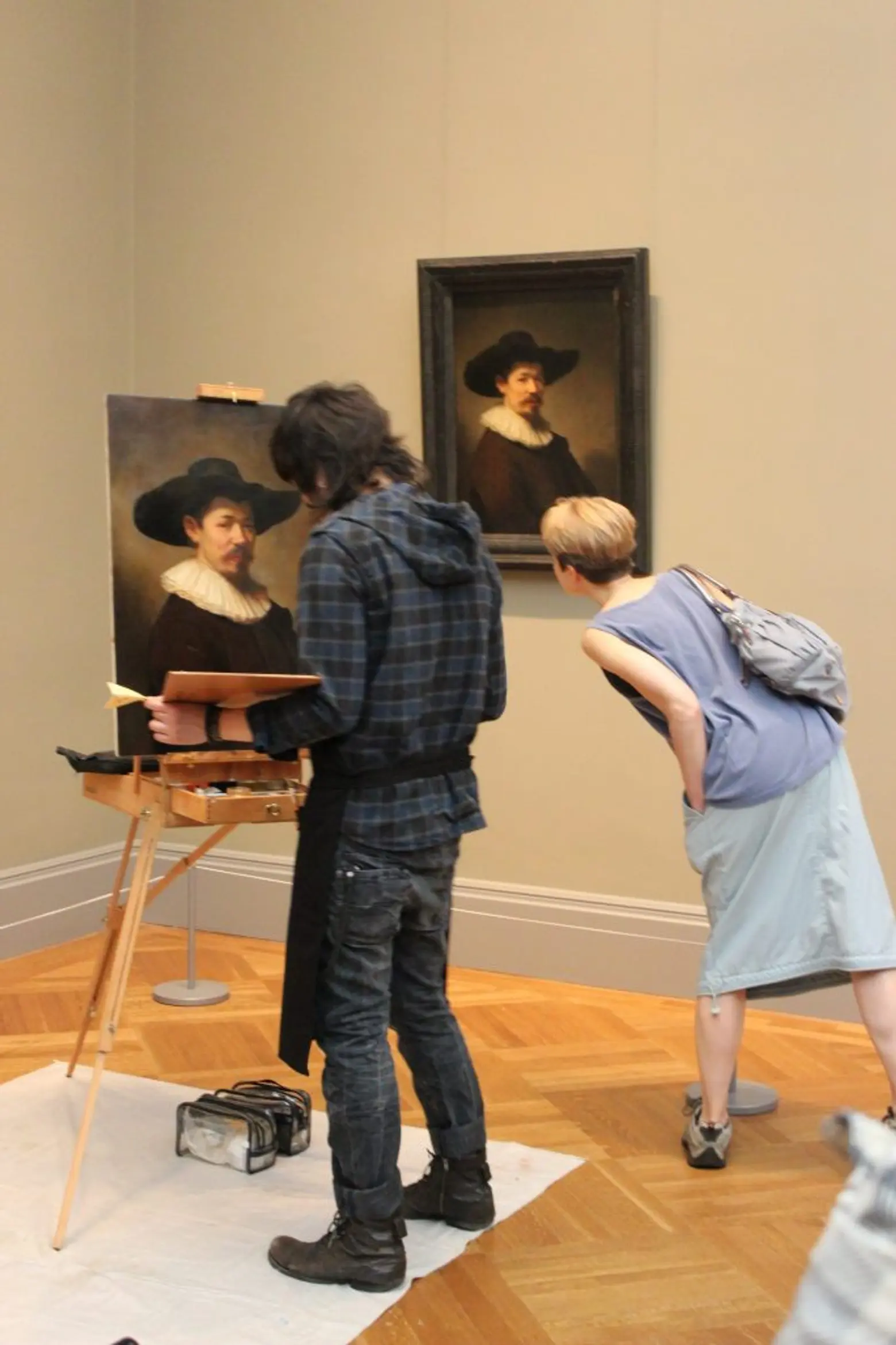 © Michelle Hagewood
© Michelle Hagewood
What do you learn from working with Copyist Program?
Maya: When you do public programs, you kind of never know who’s going to walk through the door. Copyists are so excited to be here. No matter what medium they’re working in, or if they’re new to copying, or if they’ve been doing it for 25 years, they’re just some of the most enthusiastic, gracious people. And so that’s always fun.
As far as learning, I have a ton to learn from them. Especially because my background isn’t painting. And even though we have sculpture and textile copyists, the majority are still painters. I just stare at them in awe. They come back after the first session and have everything drawn out on their canvas and I think “You worked for four hours, how is that possible?” I love seeing a work of art that seems like it’s largely complete and then coming in the next week and seeing that it’s fundamentally changed. That’s what you don’t get to see otherwise. You don’t get to see the missteps and the mind changes and all of the process, all of the work.
+++
If you are interested in applying for the Copyist Program’s spring semester, the application can be found here.
For anyone interested in drawing, the museum has an open drawing policy. All visitors are allowed to draw on paper with pencil in any of the museum’s permanent collection galleries.
This interview has been edited for clarity. All photos courtesy of The Metropolitan Museum of Art
READ MORE NEW YORKER SPOTLIGHTS:
- Spotlight: ‘New Yorker’ Cartoonist Roz Chast Reflects on the City and Her Work
- Spotlight: Ron Ben-Israel on the Art and Architecture of Creating a Wedding Cake
- Spotlight: Rita McMahon Brings Avian New Yorkers Back to Health at the Wild Bird Fund
Interested in similar content?
Leave a reply
Your email address will not be published.
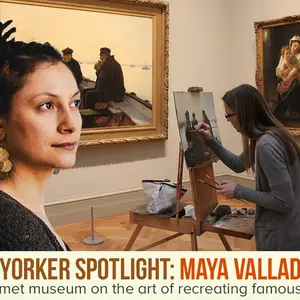
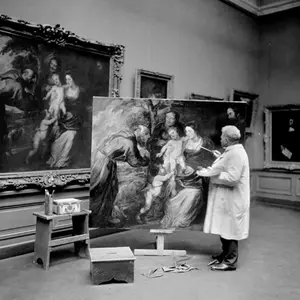
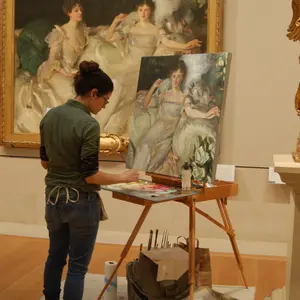
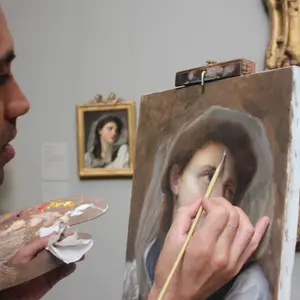
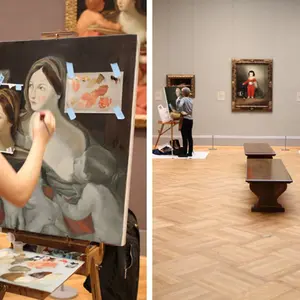
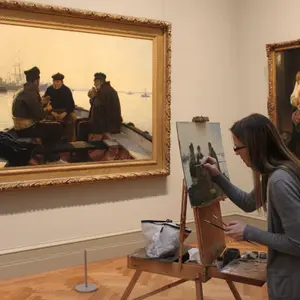
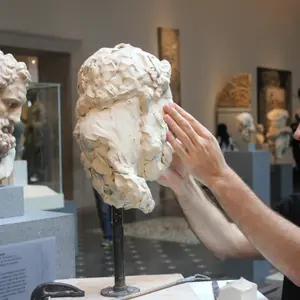
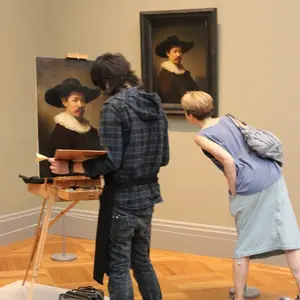
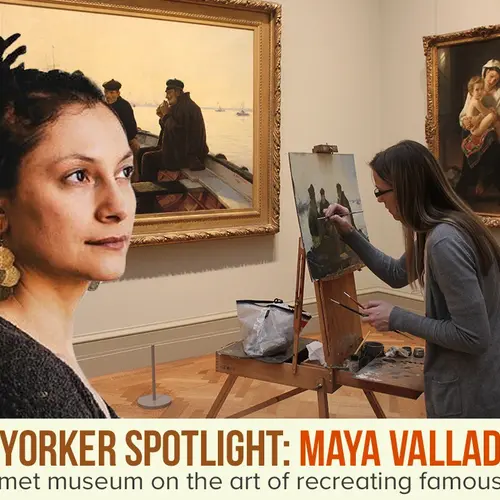
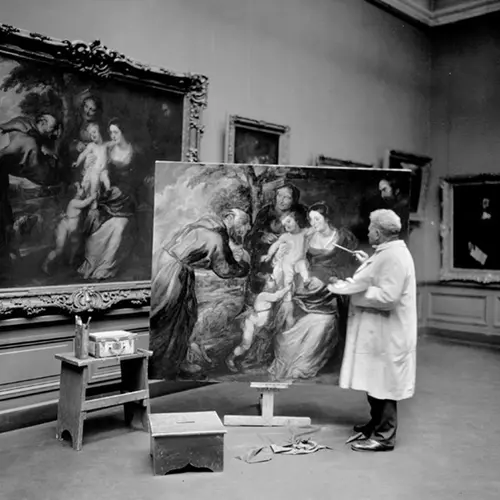
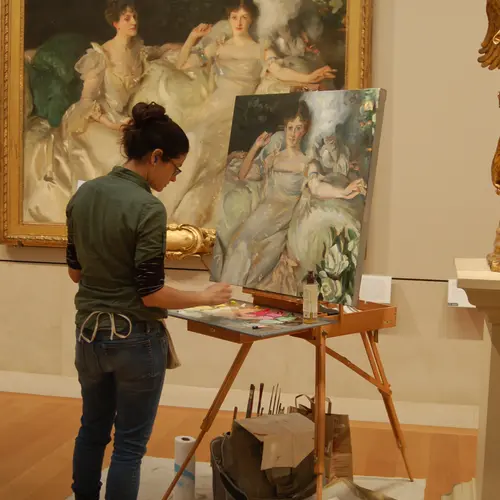
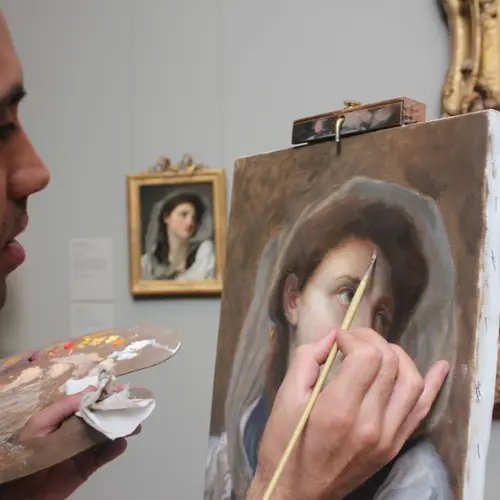
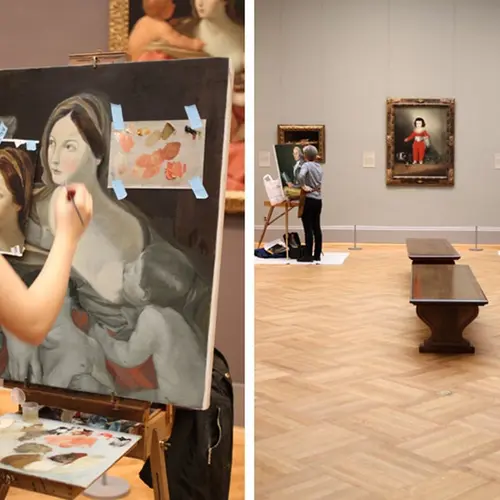

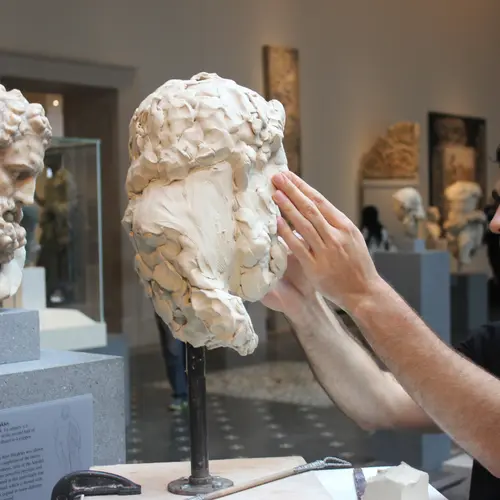
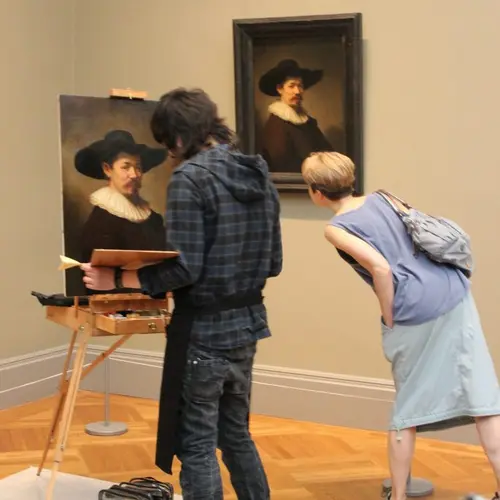




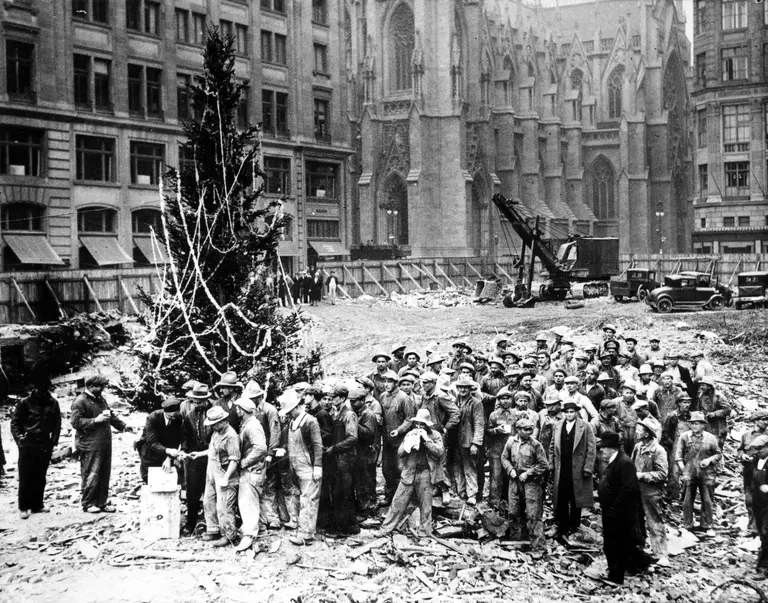
























Quick shout out to Isaac Pool, Laurie Murphy, and Alayna Wiley, my amazing colleagues who make the Copyist Program sustainable. It is certainly not me doing this work alone!